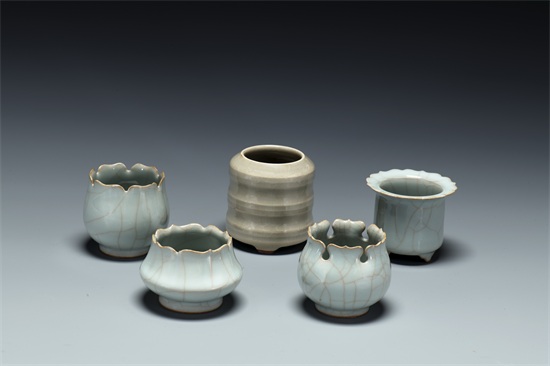Inheritor's replications of imperial kiln porcelain exhibited

Cracks in the glaze serve as decorative patterns. [Photo/hangzhou.com.cn]
An exhibition themed on the Imperial Kiln of the Southern Song Dynasty (1127-1279) opened at the Gushan branch of Zhejiang Provincial Museum on Jan 25 and will run until March 6.
The exhibits are works by porcelain-maker Jin Guorong, an inheritor of the traditional techniques used in the Imperial Kiln of the Southern Song Dynasty.
Porcelain products retrieved from the Imperial Kiln were crafted for daily use in the imperial court and for sacrificial rites. They were elegant and simple, and representative of China's aesthetic standards.

Porcelain products made by Jin Guorong. [Photo/hangzhou.com.cn]
Some pieces made in the kin were even used as ornaments for royal courts. The products of the kiln feature thin bodies and thick glazes.
Cracks in the glaze, which were deliberately made as decorative patterns, are flaws that appeared on the surface of the porcelain during baking. Cracks can be divided into several types, including broken-ice cracks, which will appear when the glaze is very thick and the body between two layers of glaze was very thin.
"Gold silk and iron thread" was another famous type, with the thick black cracks nicknamed "iron thread" and the thin yellow cracks "gold silk". Together they created a patterns like two nets covering the vase.
Mostly, the pieces baked at the kiln were bowls, plates, bottles and washing vessels. These superb Chinese products were priceless treasures that have been handed down for centuries.
Address: 25 Gushan Road, Xihu district
Dates: Jan 25 to March 6
-
'Nice' to meet you, Hangzhou
May 6, 2024



